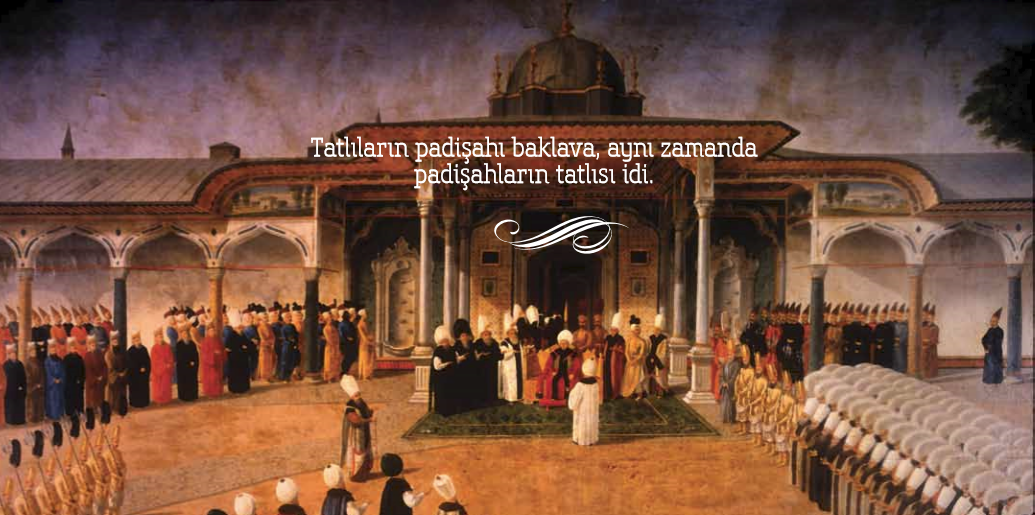History
Baklava is an important delicacy well embedded in the cuisines of almost all nations in the Middle East, Eastern Mediterranean, Balkans and Caucasia. These nations recognize baklava as their own traditional delicacy. The origin of the word baklava is uncertain but thought to be derived from the root bayla which means "to bind, wrap" in Mongolian and then Turkish verb suffix –v is added to the root. Whether or not the origin of baklava dates back to the ancient Greece, Byzantium or the migration period of Turks and Arabs, it shall be acknowledged that baklava retained today's fancy and refined look that can be described as classic baklava from the Ottoman period. Over time, Topkapi Palace also took its final form. The oldest Ottoman record on baklava dates back to the kitchen journals in Topkapi Palace during Fatih Sultan Mehmet's reign. According to this record, baklava was prepared in the Palace and Evliya Celebi writes about the baklavas he had when he became a guest to the mansion of Bitlis Governor. Records such as this one gives us the hint that baklava, known in nearly every region in the Ottoman Empire was mostly consumed in the Palace, mansions, feists and festivals. It is known for a fact that in the Palace and mansions, the cooks who mastered the art of baklava were employed and how thinly the baklava dough was spread was attached huge importance which makes us think that previously thicker doughs might have been used in preparing baklava. If so, it can be commented that baklava was perfected in the Ottoman cuisine. The effort to please the hard-to-please wealth and property owners turned baklava from a simple pastry to a refined product of cuisine which requires mastery that it is today.
AN OFFICIAL TRADITION OF CELEBRATION IN THE PLACE "BAKLAVA PARADE"

The importance of baklava in the Palace not only resulted from it being considered a sign of wealth and refinement such as in mansions, but also from the fact that it made its way into the state traditions. The tradition of baklava parade which emerged either towards the end of 17th century or the beginning of the 18th century is the most obvious example of this. On the fifteenth day of the Ramadan month, following the sultan's visit in the capacity of caliph to the cardigan of honor, palace baklava would be sent to guild of janissaries and other places for military service in a way that every ten soldier would receive one tray. The delivery of baklava by the soldiers and then being transported to the barracks was realized through flamboyant rituals. The baklava trays were wrapped by silk aprons – a kind of breechcloth- and aligned in front of the Palace kitchens while the solders to deliver the baklavas across these trays were aligned. First, the Silâhdar Ağa (The Landlord of Arms) would take the first two trays on behalf of the sultan who was considered to be number of janissary and other trays were shouldered by two soldiers each by crossing green-painted bars over the button spots of the silk aprons. The chiefs of each troop in front, those carrying the baklava trays at the back would start arching towards the barracks by getting outside of doors following a cortege. This march was called the baklava parade. People in İstanbul would run to the streets to watch the baklava parade and cheer for the sultan and the soldier.









